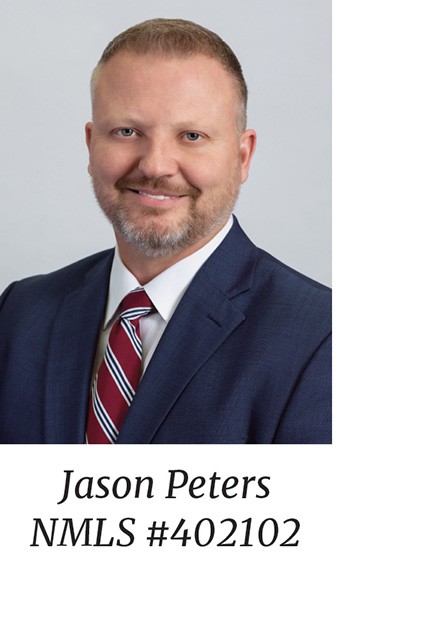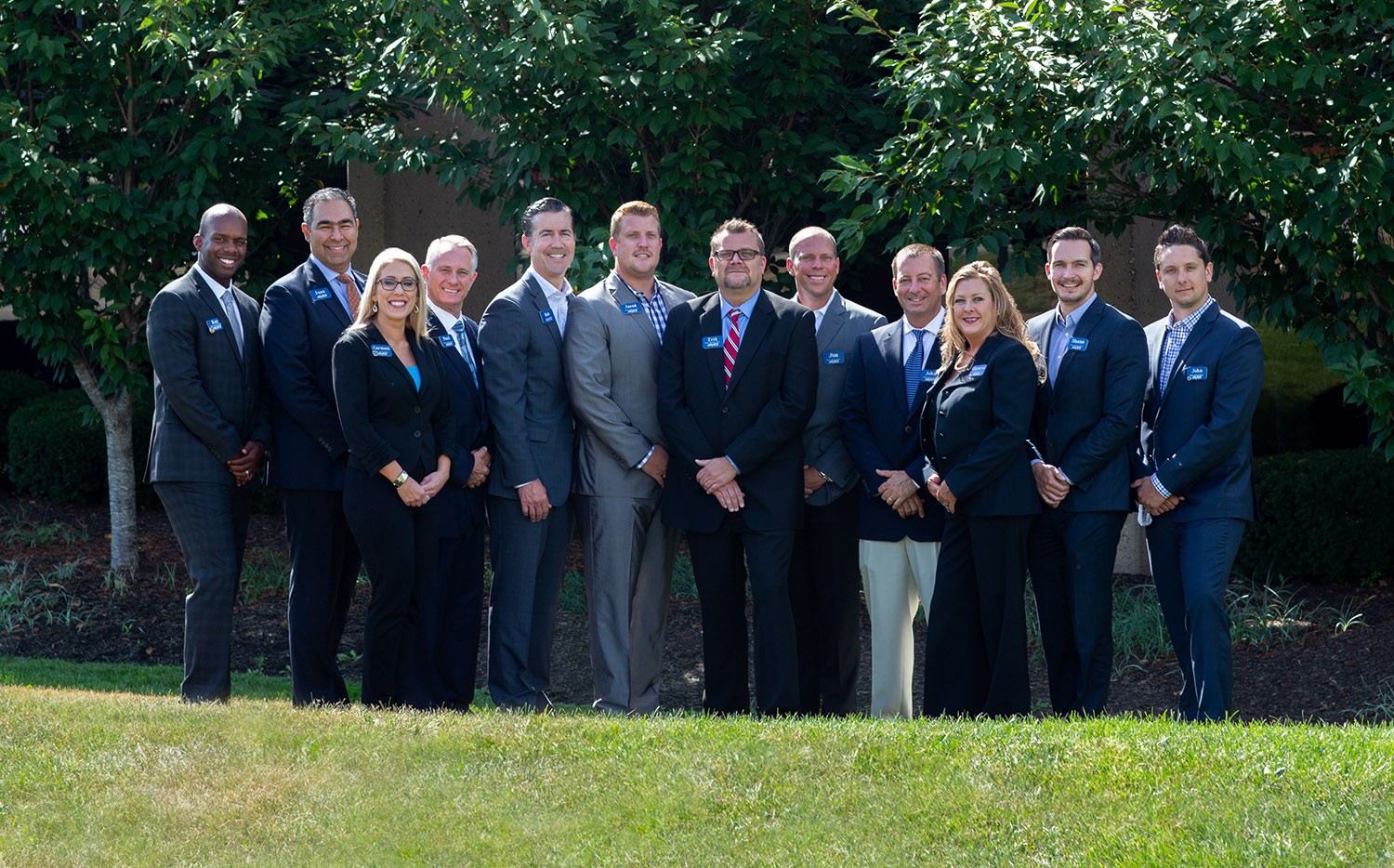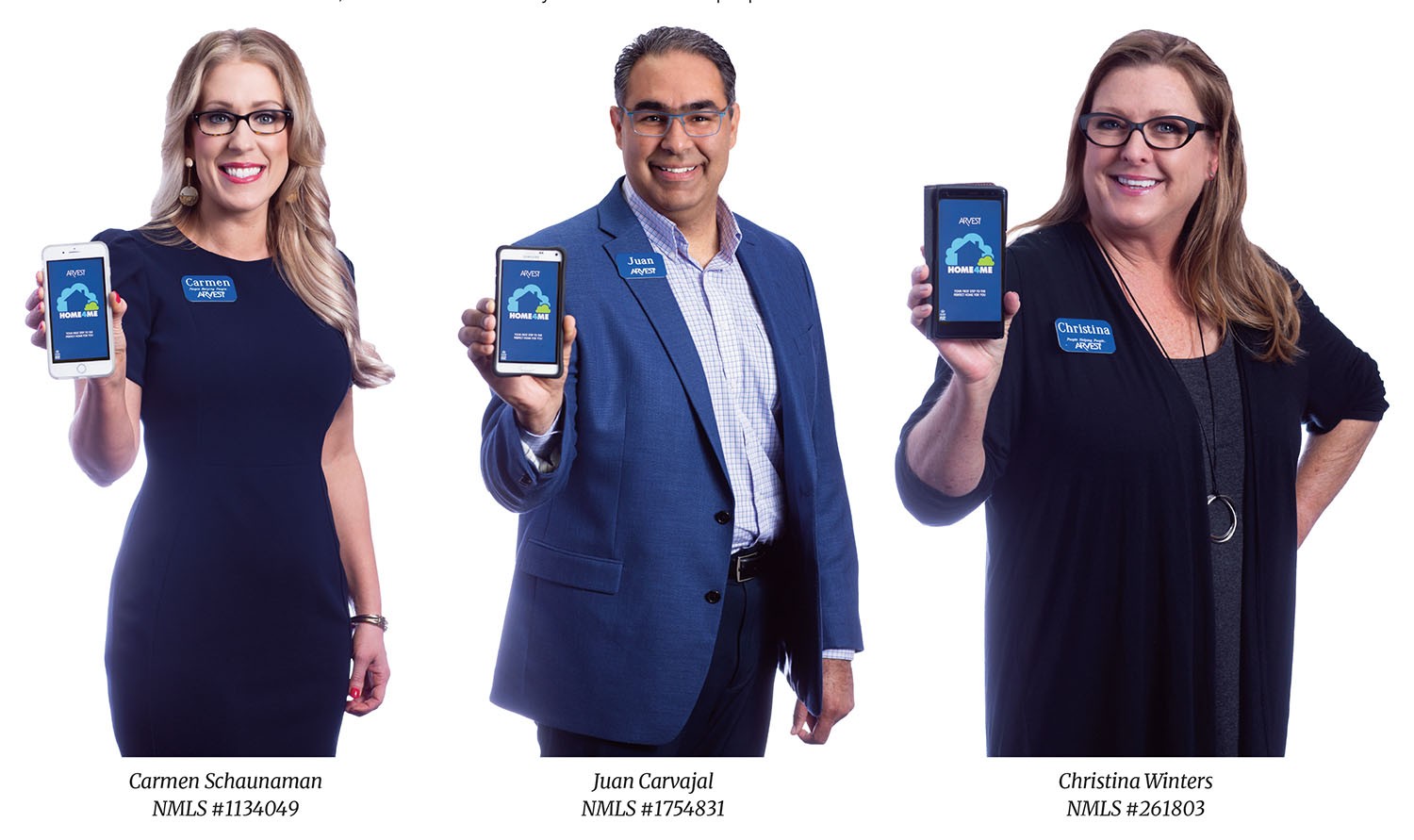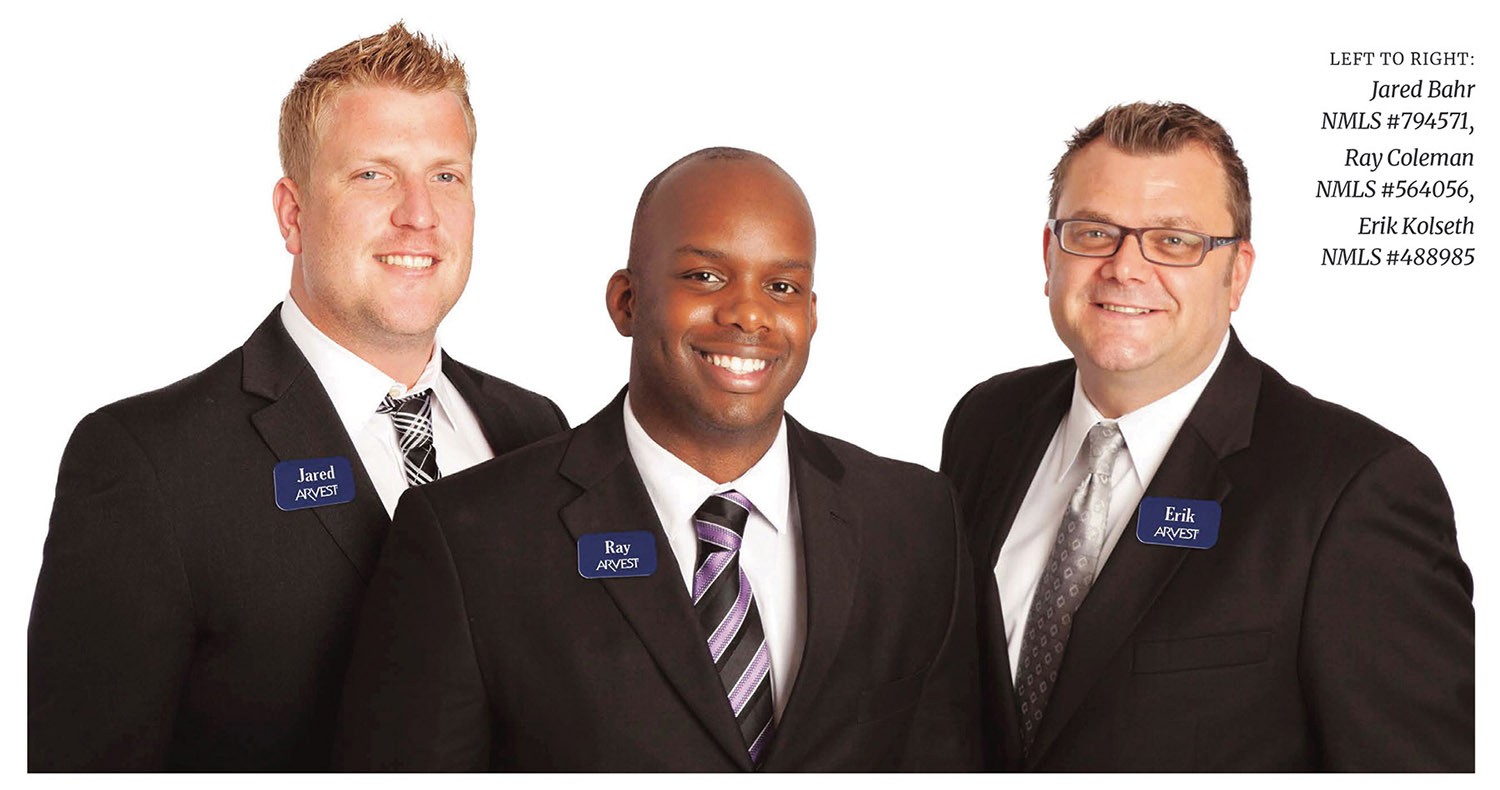Whether you want to purchase or refinance a home, the team at Arvest Bank will help you find the perfect loan solution.
Story by Ann Butenas | Sponsored Content
Purchasing a home can be one of life’s most meaningful and significant transactions. Therefore, it is vitally important to understand the process and make the right decisions, leaving no detail behind. Arvest Bank’s mortgage lenders will thoughtfully guide you through each step, educating, advising and keeping you apprised as to what to expect along the way as you journey from prequalification to securing the keys to the front door of your dream home.
Are you ready to become a homeowner?
Yes, there are a few steps to travel to reach the door of your new home, but the team at Arvest Bank will take the stress out of the equation, confidently guiding you through each step of the process of securing the perfect home loan to meet your needs.
To get started, you need to first choose what type of experience is the best fit for your lifestyle. You may choose to apply for a prequalification using Arvest’s Home4Me application, apply online at arvest.com, or apply in person by visiting one of their branches. Having a variety of ways to apply adds extra convenience that can sometimes get lost. No matter which you choose, you can always reach a lender who will answer questions along the way.
During the prequalification process, you’ll need to choose which type of loan best fits your situation and meets your needs.
“The predominant loan types are conventional and conforming loans, which are dictated by national loan limits,” stated Jason Peters, Mortgage Loan Manager at Arvest Bank. “These two types of loans comprise about 70% of the Kansas City market.”
Peters also referred to the current popularity of Jumbo, or non-conforming, loans. These are loans that are used to finance properties above the limits of a conventional conforming loan.
“These are loans over $500,000 and are often seen used in the new construction area,” he expressed. “According to KCRAR, in February of this year, the average new construction price was close to $480,000 in Johnson County, and in other areas of the metro (such as Lee’s Summit, Liberty and North Kansas City) it was over $400,000 as well. Again, this is an average, so many new construction homes fall into this Jumbo Loan arena very quickly. You have to also consider that rates are at historic lows right now and that it could likely fuel further increases in home values.”
Are you looking to build your dream home?
Just as building a new home is a process, so is securing a loan for that process. If you’re planning to build your own custom dream house and looking to obtain a construction loan in your name, it’s important to understand the process to ensure it unfolds as smoothly as possible.
When obtaining a construction loan, the loan will begin as interest only payments on the existing balance. As the home is being built, funds are paid out from the construction credit line to pay the builder. Upon completion of construction, the loan is converted to a fully amortizing loan of the borrower’s choice. Typically, customers are required to put a 20% down payment at time of initial construction.
“If you are looking to build a home, there is a process on the loan side,” detailed Peters. “New construction loans are unique, as the home hasn’t even been built yet.”
The first step is to obtain a prequalification and determine how much you are approved for.
“You are advised what you can borrow based on and determined by what you put down and what type of credit history you have,” said Peters. “Once you are pre-qualified, lenders will ask you to meet with the builder and architect to get established plans and specifications of the property itself. Doing so allows your lender to get a cost estimate from the builder and to secure the type and amount of loan you need.”
From there, the appraisal is completed based on what those specs and plans indicate.
“If you are applying for the same amount you are purchasing for, then your loan amount is easy to determine,” explained Peters. “But it is important to keep in mind that, when building a home, it can take up to 18 months for the construction to be complete. Both the market and material costs can change during that time. We close on the construction loan first, so the builder can start. Then we execute a draw to the builder for the work to be completed. We pay out the subcontractors in phases as the home is being built and account for those draws throughout the life of the project.”
“Due to the longer time of construction, there are more chances for cost overruns,” cautioned Peters, “as bid amounts on materials can change, for example.”
“People often change their minds as to what they want,” said Peters. “In some cases, we’re talking about a year to a year-and-a-half timeframe. Within that time, you may decide you want different cabinets than you previously selected, or you may find a new tile that you like more. While we advise against making a lot of changes, we have processes in place to monitor and inspect the work as it is being done. For example, if cabinets exceed their established budget, that additional money has to come from somewhere. The owner can choose to take that money from some other budgeted area, say the lighting budget, or they can pay the difference as the work is being completed.”
If material changes or a large change occurs, the process is paused and the plans, specs and appraisal are updated before moving forward again. The final appraisal is done once the home is built to those plans and specs. From there, the loan will convert to regular mortgage financing.
When the builder carries the construction loan.
“There are builders in town who may be building spec homes that are nearing completion, which leaves room for customization in things like finishes, paint, colors, tile, and carpet selections,” said Peters. “The builder generally carries that construction loan. That particular builder may have a variety of floorplans to choose from. If this is the type of new construction home you’re interested in financing, you would want to obtain a prequalification, select your finishes to determine a final price with your builder and then move forward with financing your home.”
A comprehensive menu of loan options: lending you an ear is key to making the right decision.
Arvest Bank offers a variety of loan options to clients. They know not all home loans are the same, and the home loan you choose affects not only your monthly payment, but your overall cost, too. The lenders at Arvest Bank will walk you through the options so you can make the best decision for your situation and borrow with confidence.
“We always want borrowers to understand the different types of mortgage loans available and feel comfortable with our ability to meet them in their current situations,” emphasized Peters. “Our lenders are highly educated and work diligently to help borrowers make good decisions. At Arvest, we have all of the right technology in place for our customers to use on their own, but we also really value that personal approach to help clients make those big decisions. And they are big decisions!”
Specially designated loan types:
Physician loans: Specific to Arvest Bank, if someone is just out of medical school, in residency or a physician in practice for years, Arvest Bank offers many products and services to complement their competitive, local mortgage options. Certified physicians qualify for specific products that can help solve complex financial situations.
Veteran loans: These loans are for those individuals currently on active duty or retired from the military. Upon meeting certain criteria, applicants can qualify for a Veterans Assistance (VA) loan and borrow up to 100% with no mortgage insurance required.
USDA loans: These are offered for rural development and rural properties.
Looking to make changes to your home? Consider a Home Equity Line of Credit.
A HELOC, or a home equity line of credit, is a loan in which a lender agrees to lend a maximum amount within an agreed time period. The collateral is the borrower’s equity in his or her home.
Having funds available in a HELOC can make home improvements or enhancements easier for homeowners, because funds are accessible as needed.
In certain cases, homeowners will also get one of these loans during the mortgage loan process to use later when they are wanting to make changes or improvements to their recently purchased home.
Unsecured home improvement loans: another appealing option.
Now that you have that new house, suppose you want to finish the basement or install some spectacular landscaping. Arvest Bank can help finance those project through an unsecured home improvement loan. Unlike home equity loans or HELOCs, these loans are not secured by your home; instead, approval is based primarily upon your income, credit, project details and purchase history.
Choosing the best lender: your first step to the perfect home.
“We service 99% of all the loans we make, ensuring what starts with us stays with us,” said Peters. “Arvest Bank has a proven, award winning customer service model in place and we treat home loans with the same care as we do all banking products. We work hard to be a great financial partner and assist our home loan customers throughout the lifetime of their loan, even well after closing. Lending is not just confined to documents; it also involves relationships, those that are established now and that continue into the future. Down the road, when you have a question about an insurance check from hail damage on your roof, you call us. When rates drop and you want to know if it makes sense to refinance, you call us.”
“Customers can apply in person, or start their application in our Home4Me app, or online,” notes Peters. “With our easy-to-use app, Arvest Bank gives customers the opportunity to quickly request home loan pre-qualification right in the palm of their hands. We have the technology side to assist our clients, but we partner that with a strong personal touch, as we think it is very important to the relationship.”
“We get to know you and learn how to meet your needs,” said Peters. “We offer online and in-branch support. You can speak to someone no matter where you are in the closing process, from application to pay off and even long after closing. Customer satisfaction is top priority.”
FOR MORE INFORMATION
Arvest.com/HomeLoan
Arvest Bank is an Equal Housing Lender.







